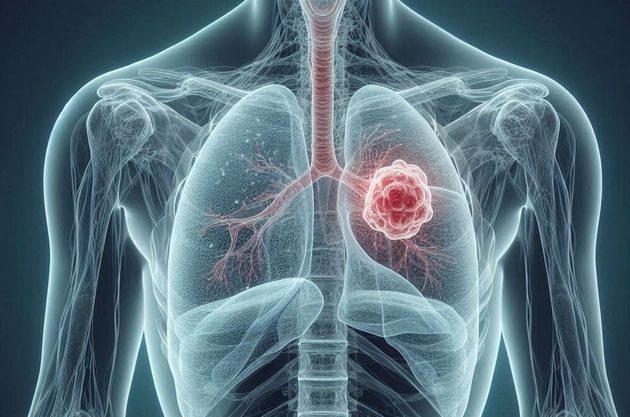A New Method by American Scientists Could Help Address Treatment-Resistant Cancer Cases.
According to Live Science, a research team from Pennsylvania State University has developed a method to turn some cancer cells into “traitors,” which self-destruct and eliminate the remaining cells in the tumor.
Specifically, they have “hacked” certain genes in some cancer cells, altering their evolutionary process and transforming them into “pills” right within the tumor.

The experiment at Pennsylvania State University has made initial progress with the most common type of lung cancer – (Image AI: Anh Thư).
This new study targets treatment-resistant cancers. The authors chose non-small cell lung cancer (NSCLC)—the most common type of lung cancer—for their experiments.
Most NSCLC cells develop resistance to the commonly used cancer treatment drug erlotinib approximately one year after treatment, which can lead to disease recurrence.
According to a publication in the scientific journal Nature Biotechnology, researchers developed a technique to introduce two “suicide genes” into NSCLC cells in a petri dish.
In this process, one gene, when combined with the cancer treatment drug erlotinib, grants the cells drug resistance. This may seem counterintuitive, but it allows the modified cells to survive and dominate within the tumor.
They referred to this as the “trap-setting” process. After ensuring that the modified cells are robust enough to survive and grow, they ceased using erlotinib.
Subsequently, the second suicide gene is activated by a harmless molecule called 5-FC. Ingeniously, this second gene encodes for an enzyme that allows the cells to convert 5-FC into a toxin known as 5-FU, effective in killing cancer cells.
Ultimately, the modified cells, which have become strong enough to not be overwhelmed by other cells, are introduced into the tumor.
At this point, they act like toxic pills—not harmful to the body but lethal to the tumor. They rapidly proliferate and release a massive amount of the 5-FU toxin, obliterating the remaining cancer cells.
In experiments conducted on mice, after approximately 20 days of treatment, the transformed cancer cells surpassed the unmodified surrounding cells. By day 80, the tumor volume had decreased to zero.
The research team continues to work on refining this method and is progressing toward clinical trials.




















































